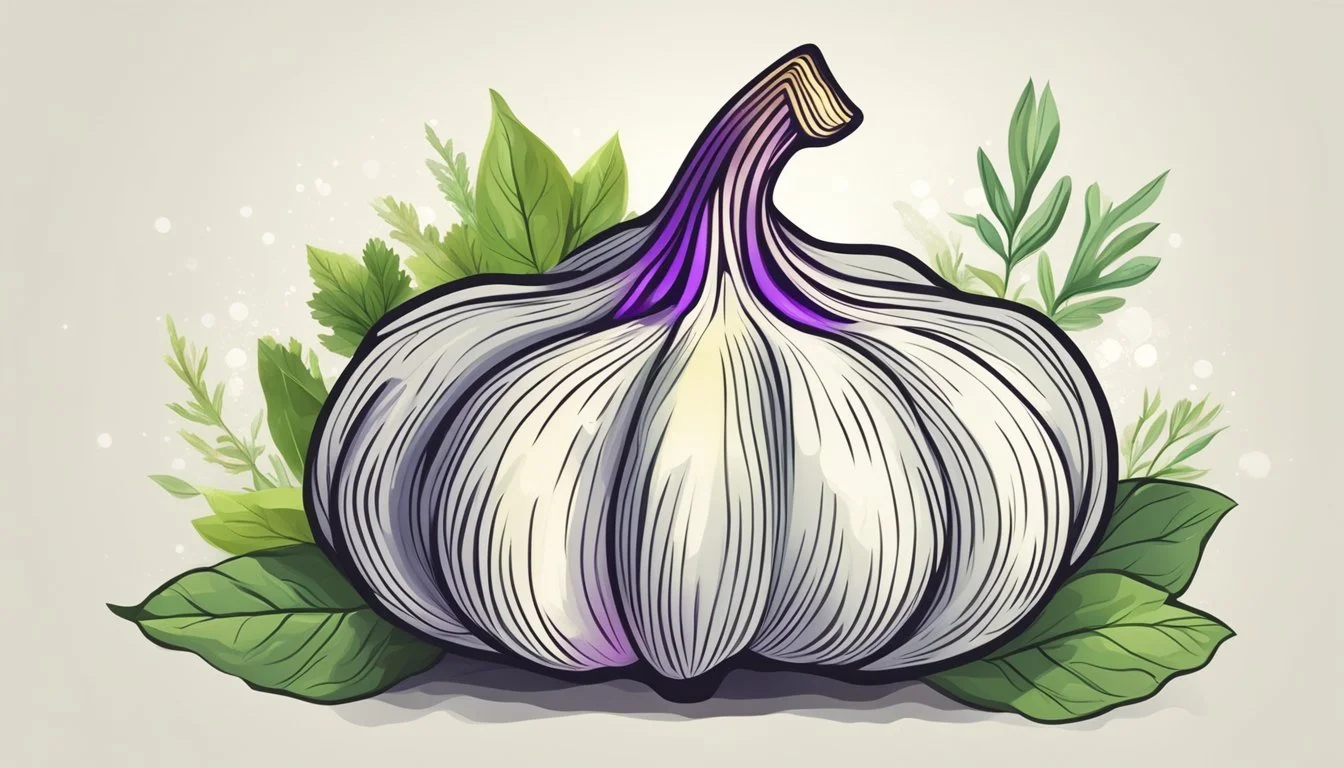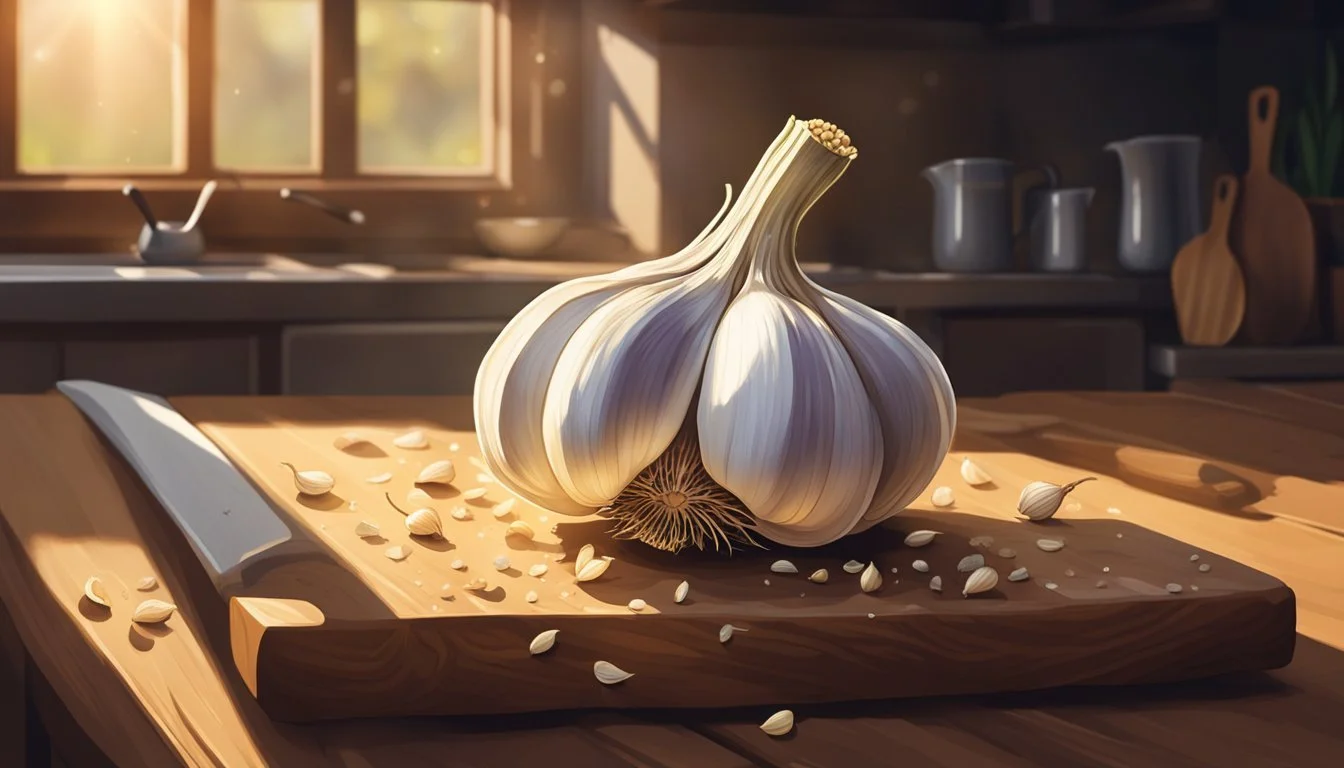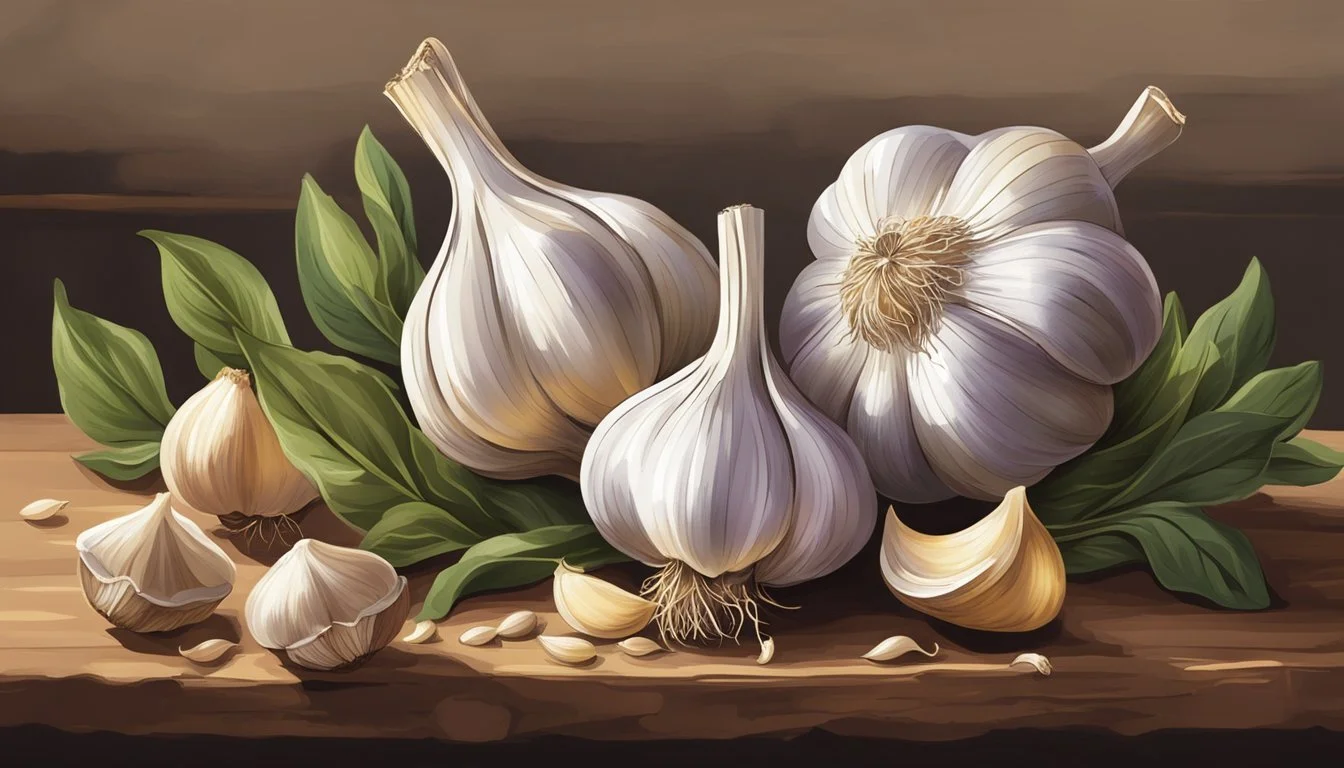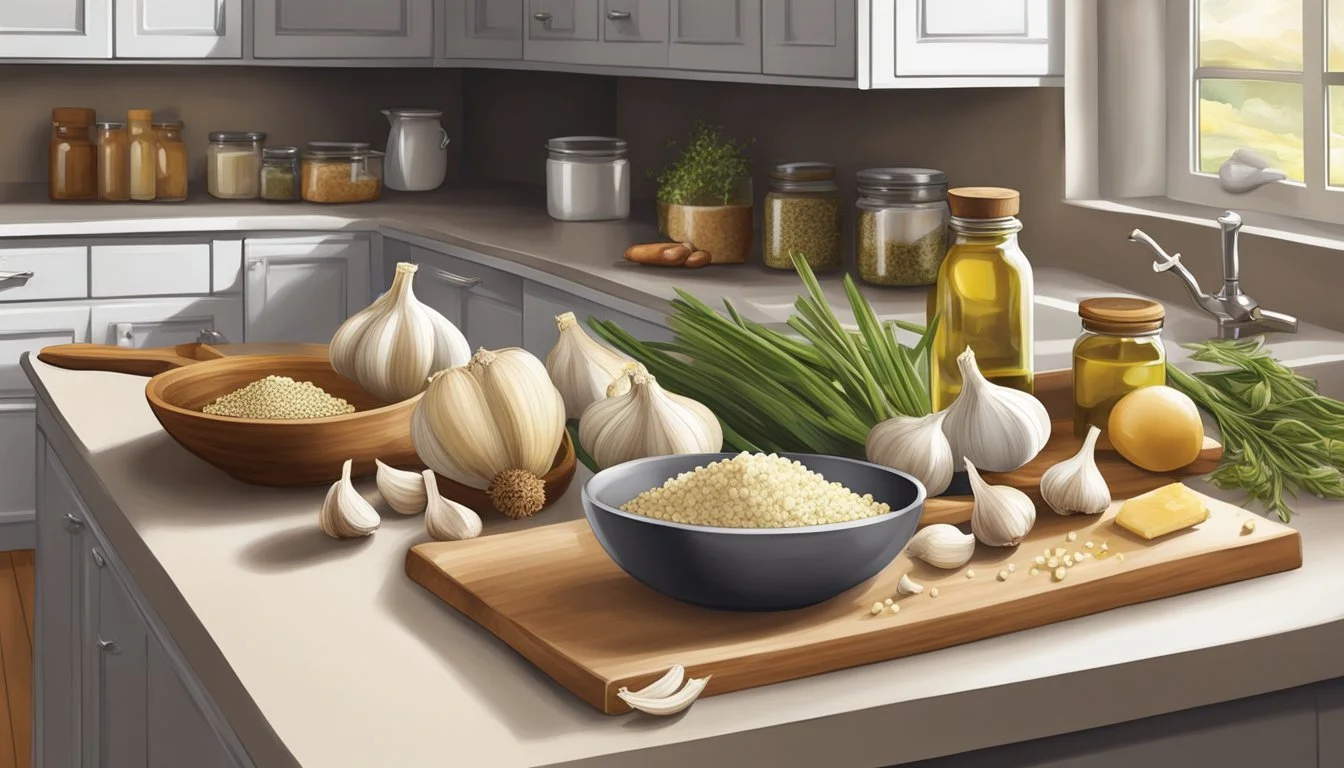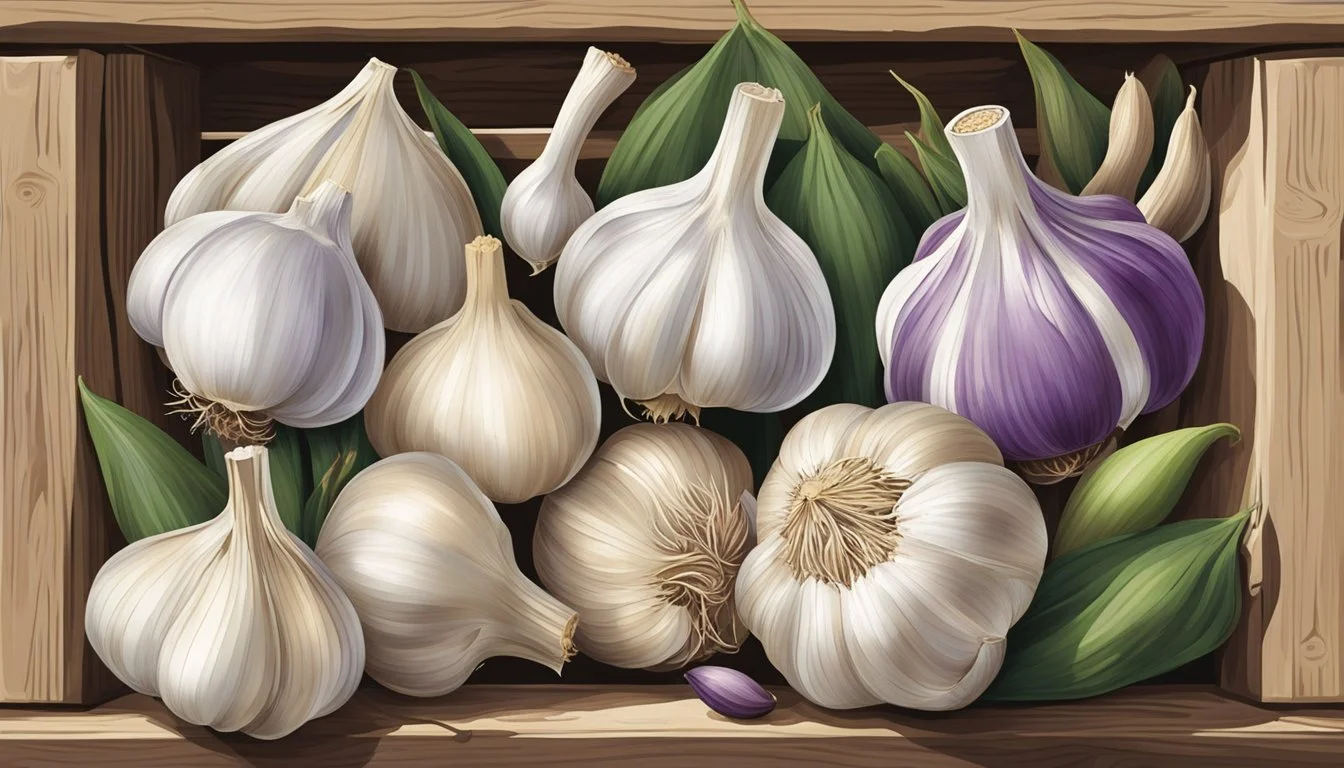Garlic
The Immunity-Boosting Superstar Unveiling Traditional Culinary Secrets
Garlic (What wine goes well with garlic?) has long stood as a cornerstone in the pantheon of natural remedies, its pungent aroma a marker of its potency and diverse applications. This bulbaceous plant, widely used across different cultures and cuisines, brings more than just flavor to the table. It is revered for its health-promoting properties, particularly for its role in enhancing the immune system. Rich in essential nutrients such as vitamin C, niacin, folate, zinc, phosphorus, and magnesium, garlic is a powerful ally in maintaining personal health.
Historical traditions from ancestral kitchens around the world have harnessed the benefits of garlic not just for its culinary contributions but also for its medicinal impact. Contemporary research has started to validate what many cultures have believed for centuries—that garlic indeed possesses immune-boosting properties. The presence of compounds like allicin, which is released upon crushing or chopping garlic, is thought to play a key part in its health benefits.
Incorporating garlic into one's diet is a practice as old as time, yet it remains relevant in modern health discussions. Professionals and home cooks alike treasure garlic for its versatility and efficacy. Whether used to add complexity to a dish or consumed for its therapeutic effects, garlic continues to exhibit its strengths as an immunity-boosting superstar, a testament to its enduring legacy that transcends culinary trends.
Garlic, celebrated for its rich flavor and potential health benefits, has been cherished for centuries for its remarkable contributions to culinary and wellness practices. This versatile herb has been an integral part of traditional wellness, valued for its ability to support overall health. When combined with nuts and seeds, dates, and rhodiola rosea, garlic offers a holistic approach to promoting well-being, reflecting its enduring appeal in ancient and modern wellness traditions.
Furthermore, the addition of hawthorn berry, neem, and slippery elm further complements the health-promoting potential of garlic, contributing to its reputation as a versatile and effective natural remedy. Additionally, the incorporation of fennel seed into culinary and wellness practices alongside garlic has expanded the spectrum of potential health benefits, underscoring the enduring appeal of this remarkable herb.
In conclusion, garlic continues to be celebrated for its positive impact on nutrition and vitality, offering a natural solution for promoting overall well-being. Whether used in cooking, dietary supplements, or wellness tonics, garlic remains a symbol of wellness and natural health practices, embodying a rich heritage of traditional wellness and culinary exploration.
Garlic at a Glance
Garlic, a member of the allium family alongside onions, leeks, chives, and shallots, is renowned for its culinary and medicinal properties. With a history of consumption dating back to ancient civilizations, it is both a flavorful spice and a nutritional powerhouse.
Key Nutrients & Compounds:
Allicin: When garlic is crushed or chewed, alliin, an inactive compound, converts into allicin, responsible for garlic's distinct aroma and health benefits.
Sulfur-Containing Compounds: Garlic is rich in these compounds, which are thought to contribute to its therapeutic effects.
Health Benefits: Garlic is associated with multiple health benefits, particularly for the heart. Research suggests that it has the potential to lower blood pressure, improve cholesterol levels, and reduce the risk of heart disease. Furthermore, garlic contains antioxidants that support the immune system's ability to fight infections.
Table of Immune-Supportive Compounds in Garlic:
Compound Name Known For Alliin Precursor to allicin Allicin Antibacterial, antiviral Sulfur Helps absorption of zinc
Garlic stands out not only for its robust flavor but also for its role in promoting well-being and potentially mitigating various diseases. It may particularly help bolster the immune system, offering protection against common illnesses. However, it is important to consume garlic as part of a balanced diet to fully benefit from its properties.
Historical Use of Garlic in Traditional Medicine
Garlic, Allium sativum, has been a cornerstone in traditional medicine since ancient times. Its recognition for medicinal properties can be traced back to various civilizations, including the Egyptians, Greeks, Romans, Chinese, and Indians.
In Egypt, laborers consumed garlic to maintain their strength while building the pyramids. Ancient Greek physician Hippocrates, often called the Father of Western Medicine, prescribed garlic for a variety of conditions such as respiratory problems, fatigue, and to aid in healing. Roman soldiers ate garlic to enhance their courage and alleviate intestinal issues.
Traditional Chinese and Indian Ayurvedic medicine both recognized garlic's potential. Practitioners recommended it for its antimicrobial and antibacterial qualities, as well as its role in managing heart-related conditions and digestive disturbances.
The following table highlights the key medicinal applications attributed to garlic across different cultures:
Culture Medicinal Use Egyptian Enhancing physical strength Greek Treating respiratory issues, fatigue, infections Roman Intestinal relief, courage-building Chinese Parasite eradication, respiratory enhancement Indian Cardiovascular support, digestive health promotion
Garlic's ability to bolster the immune system is rooted in both history and modern science. Its antioxidant properties, responsible for fighting free radicals, and its antiviral capabilities make it a natural ally in disease prevention and treatment.
Each of these historical applications of garlic has contributed to its reputation as a health-supporting superfood. The therapeutic benefits, tied to numerous compounds such as allicin, validate the ancestral use and underscore garlic's lasting medicinal value.
Garlic and Immune System Support
Garlic has long been recognized for its health benefits, particularly its role in supporting the immune system to combat infections like the common cold and flu.
Boosting White Blood Cells
Garlic enhances the function of white blood cells, thereby strengthening the body's ability to fight off viruses. For example, components within garlic can increase the activity of macrophages, the immune cells that act as first responders to viral infections.
Macrophages: Engulf and destroy pathogens.
Lymphocytes: Coordinate the tailored immune response.
Note: Garlic compounds promote proliferation and activity of these cells.
Natural Remedy for Colds and Flu
Garlic is a traditional remedy for respiratory infections due to its immune-boosting properties. Studies indicate that regular garlic supplementation may result in:
Reduced severity of colds and flu symptoms.
Decreased frequency of infection in individuals.
Garlic's antiviral properties are attributed to compounds such as allicin, which demonstrate the ability to inhibit viral replication and offer therapeutic benefits during infection.
The Science of Garlic's Health Benefits
Garlic, long celebrated for its potent health benefits, particularly boosts immune functions and mitigates inflammation. With its rich enzymatic and sulfur-containing compounds, garlic stands as a formidable ally against various health ailments.
Allicin: The Wellness Warrior
Allicin is the crucial compound formed when garlic is chopped or crushed, initiating a chemical reaction that releases this sulfur-bearing warrior. Responsible for the distinctive aroma of garlic, allicin exhibits formidable disease-fighting properties.
Antimicrobial: Allicin is known to combat pathogens, contributing to the body's defense against infections.
Heart Health: It is associated with improved blood pressure and overall heart function, potentially reducing the risk of heart attack.
Cancer Research: Preliminary studies suggest that allicin may play a role in reducing the risk of certain types of cancer.
Anti-inflammatory and Antioxidant Effects
Garlic's anti-inflammatory capabilities stem from its ability to inhibit the production of pro-inflammatory biochemicals, thereby reducing unwanted inflammation.
Antioxidant Power: Garlic contains antioxidants that neutralize free radicals, substances that can cause damage to cells and tissues.
Enzymatic Function: The enzymes in garlic help to support the metabolism and may contribute to the reduction of inflammation-related diseases.
Chronic Disease: Regular consumption of garlic may be correlated with a lower prevalence of some chronic conditions, such as heart disease and certain forms of cancer.
Garlic and Cardiovascular Health
Garlic has long been considered beneficial for cardiovascular health. Studies have indicated that regular garlic consumption may lead to health improvements related to the heart.
Cholesterol Management
Garlic is particularly noteworthy for its impact on cholesterol levels. Evidence suggests that it can influence cholesterol by:
Lowering Total Cholesterol: Incorporating garlic into a diet may reduce total cholesterol levels, which is important for heart health.
Reducing LDL (Bad) Cholesterol: LDL cholesterol is often referred to as "bad cholesterol" since high levels can lead to plaque buildup in arteries. Garlic has been observed to lower LDL cholesterol, potentially minimizing the risk of heart disease.
Blood Pressure Regulation The effects of garlic on blood pressure are also well-documented. Compounds in garlic can dilate blood vessels, aiding in the reduction of blood pressure. This is particularly beneficial for those with hypertension, a major risk factor for heart disease.
Antioxidant Properties Garlic's antioxidant components contribute significantly to cardiovascular protection by helping to prevent oxidative damage to blood vessels and the heart.
The table below summarizes the impact of garlic on cardiovascular health:
Cardiovascular Aspect Impact of Garlic Cholesterol Levels May lower total and LDL cholesterol Blood Pressure Can contribute to reduced blood pressure Antioxidant Capability Supports prevention of oxidative stress
Incorporating garlic into one's diet could be part of a comprehensive approach to maintaining and improving heart health, but it should not replace medical treatment for cardiovascular conditions. Always consult with a healthcare provider for personalized advice.
Garlic's Nutritional Profile
Garlic, esteemed for its health-supporting qualities, embodies a remarkable nutritional composition that fortifies the immune system. Packed with essential vitamins and minerals while maintaining a low-calorie profile, it offers a substantial nutrient density.
Vitamins and Minerals Galore
Garlic is a rich source of several key vitamins and minerals important for overall health. It contains:
Vitamin C: An essential nutrient that supports the immune system and skin health.
Calcium: Crucial for bone strength and cardiovascular function.
Potassium: Vital for cell function, heart rhythm, and blood pressure regulation.
Magnesium: Important for many processes in the body, including nerve function and blood sugar control.
Selenium: A powerful antioxidant that helps protect against oxidative stress.
Phosphorus: Necessary for the formation of bones and teeth and helps in the conversion of food into energy.
Each of these nutrients contributes to the immune system and the body's proper functioning, making garlic a powerful food for maintaining health and preventing illness.
Low-Calorie, High-Nutrient Density
The nutritional facts of garlic illustrate its high-nutrient, low-calorie profile. In a modest serving:
Calories: Approximately 13.4 for three cloves.
Carbohydrates: Roughly 2.98 grams, which provides energy.
Protein: Around 0.572 grams, essential for building and repairing tissues.
Fats: Negligible amounts, making it ideal for low-fat diets.
This combination of low calories and rich nutrient content makes garlic an excellent addition to any diet, providing health benefits without adding unnecessary caloric intake.
Incorporating Garlic into Your Diet
Including garlic in one's diet is a straightforward method to capitalize on its immune-boosting properties. It can be utilized in various forms, from cooking to consuming raw, to supplement intake, each offering unique benefits.
Cooking with Garlic
Soups: Incorporate finely chopped garlic at the beginning of the cooking process to imbue soups with its flavor and nutritional benefits.
Salads: Garlic can be whisked into dressings, or minced garlic can be sprinkled on top of salads.
Enhancing Dishes:
Roasted Garlic: Garlic cloves can be roasted with a drizzle of olive oil until they're caramelized and soft, then spread on bread or mixed into dishes.
Garlic-Infused Oils: Combine garlic and olive oil, then let the mixture sit to create a flavored oil that can be used for cooking or as a salad dressing component.
Raw Garlic Benefits
Consumption Methods:
Chopped in Salads: Raw garlic can be finely chopped or crushed and tossed into salads for added zest and health benefits.
Garlic Water: Soaking minced garlic in water and drinking it is purported to enhance its immune-boosting effects.
Garlic as a Supplement
Forms of Garlic Supplements:
Capsules/Tablets: These convenient forms of supplements contain dried or powdered garlic.
Aged Garlic Extract: Available as a liquid supplement, providing a different profile of compounds compared to raw garlic.
Supplement Usage:
Dosage and Frequency: It's essential to adhere to the recommended dosage on supplement packaging to avoid excessive intake.
Combining with Foods: Garlic supplements can be taken with meals, which may aid in digestion and mitigate potential stomach discomfort.
By adding garlic to meals through cooking, utilizing its raw benefits, or opting for supplements, individuals can easily integrate this immune-boosting superstar into their daily regimen.
Potential Interactions and Side Effects
Garlic is celebrated for its health benefits, particularly for its ability to bolster the immune system. However, it's important to be aware of potential interactions and side effects to ensure its safe consumption.
Side Effects: Generally, garlic is safe for most people when consumed in food amounts. High doses or concentrated garlic supplements may cause:
Digestive discomfort
Heartburn
Gas
Nausea
Allergy: Garlic allergies are uncommon, but they do exist. Allergic reactions can include skin rash or respiratory issues.
Digestive System: While garlic can help maintain a healthy digestive tract, some individuals may experience gastrointestinal irritation or infections. Those with sensitive stomachs should use garlic with caution.
Probiotics: Garlic has natural antibacterial properties, which means it could potentially impact gut flora. To maintain a balanced digestive system, individuals may consider pairing garlic with probiotics.
Alcohol Interaction: Eating garlic while consuming alcohol might increase the risk of liver damage. Moderation is advised.
Antibiotics: Garlic may interact with certain antibiotics, reducing their effectiveness. Individuals on antibiotic treatment should discuss garlic consumption with a healthcare provider.
Treatment: Although garlic supports immune function, it should not replace conventional treatments for medical conditions. If used as an adjunct to traditional therapy, one should first consult with a healthcare professional.
To summarize, while garlic can be a powerful natural remedy, it's essential to consume it responsibly to avoid unwanted effects or interactions with other substances and treatments.
Beyond Nutrition: Other Uses of Garlic
Garlic, esteemed for its health-promoting properties, also holds a distinguished place beyond dietary realms. It is tightly woven into cultural traditions and serves various cosmetic and secondary applications, showcasing its versatility.
Garlic in Cultural Traditions
In India and other parts of the world, garlic occupies a significant role in cultural and religious practices. It's often considered a protective agent against evil spirits and bad fortune. In some traditions, strings of garlic, along with onions and shallots, are hung in homes or used in ceremonies to ward off negativity. These vegetables are not only staples in culinary arts but also in rites that transcend mere sustenance, intertwining with spiritual beliefs.
Protective Use: Common in India, strings of garlic believed to repel evil.
Culinary Symbolism: Garlic often symbolizes protection and purification in ceremonies.
Cosmetic and Secondary Applications
Garlic's utility surpasses the kitchen and medicinal uses, as it finds a place in cosmetic and secondary applications. Garlic extracts, because of their antibacterial properties, are sometimes included in skincare products to foster a healthy complexion and alleviate stress-related skin conditions. Additionally, there are anecdotes and some evidence supporting garlic's use as an aphrodisiac, pointing to its power to enhance romance and vitality.
Skincare: Garlic infused products used to combat bacterial skin issues.
As Aphrodisiac: Believed to stimulate romantic desire and improve stress resilience.
Garlic's pungent essence and multifaceted nature have established it as a superstar beyond nutrition, echoing through various aspects of daily life and tradition.
Storage and Selection of Quality Garlic
When selecting high-quality garlic, shoppers should look for firm bulbs with intact, dry skin. Avoid bulbs that feel soft or display signs of mold. The color should be an even, creamy white or purple, depending on the variety, without any green shoots.
A comparison for storage longevity:
Allium Approx. Shelf Life Garlic 3-5 months Onion 2-3 months Leek 1-2 weeks Chives 1 week Shallot 1 month
For optimal storage of garlic, one should use a cool, dry place away from sunlight. Humidity promotes sprouting and mold, so ensuring good air circulation is key. A mesh bag or a basket is ideal. Never store garlic in plastic as this can trap moisture and reduce its shelf life.
Prompt: Highlighting key considerations for odor management, it's important to note that garlic's strong, pungent smell is due to its organosulfur compounds. Storing it separately from foods like potatoes or onion can help in minimizing odor transfer.
To maintain garlic's powerful immune-boosting properties, proper storage and selection are crucial. Bulbs kept too long may lose some beneficial properties. Always choose undamaged bulbs and store them as recommended, ensuring the garlic remains a potent part of one’s diet.
Emerging Research on Garlic
Garlic (Allium sativum) has been a staple in both culinary and medicinal settings for thousands of years. Recent studies illuminate its potential in modern health contexts, enriching our understanding of its therapeutic properties.
Key Compounds:
Allicin: This is released when garlic is crushed or chopped and is considered a potent bioactive compound.
Diallyl disulfide: Another important sulfur-containing compound, integral to garlic's benefits.
Health Implications:
Immune System: Garlic shows promise in boosting immune function, highlighting an increase in CD4+ T cell and total white blood cell count.
Inflammation: Garlic compounds exhibit anti-inflammatory effects, which may be beneficial in conditions like metabolic syndrome.
Antioxidants: These compounds help mitigate oxidative stress, which is implicated in a range of chronic diseases.
Antimicrobial Activity: Garlic's antibacterial and antifungal properties have been recognized, offering potential alternative treatments for various infections.
Chronic Diseases:
Cancer: Research points to garlic's ability to interfere with cancerous processes and promote apoptosis in cancer cells.
Neurodegenerative Disorders: The anti-inflammatory and antioxidant properties of garlic may offer neuroprotective effects.
Diabetes: Modulation of inflammatory mediators by garlic may aid in managing diabetes-related metabolic disturbances.
In sum, garlic's compounds such as allicin and diallyl disulfide contribute to its therapeutic potential across a spectrum of health conditions. While ancient medicine has long revered garlic, modern research continues to substantiate its role as an immunity-boosting superstar, affirming its place in both ancestral and present-day kitchens.
Conclusion
Garlic has solidified its reputation as a staple both in the culinary world and within the domain of natural health remedies. Its influence stretches from antiquity to modern-day, predominantly noted for its immune function enhancement properties.
Immune Support: Studies suggest that garlic contributes to immune system defenses, promising an edge against common illnesses.
Nutrient-Rich: It is a nutrition powerhouse, packed with vital compounds such as allicin that offer health benefits.
Aged Garlic Extract: This particular form of garlic has been highlighted for its potentially stronger immune-boosting effects.
When incorporated into diets, garlic does more than add flavor. The components within garlic interact with human biological systems, suggesting a potential role in prophylaxis and therapy of various ailments. They key to its efficacy lies in its complex chemistry, which is robust with sulfur-containing compounds and numerous trace elements beneficial to health.
Health enthusiasts and researchers recognize garlic's multifaceted role as both a food ingredient and a supplement. The scope of garlic's capabilities, particularly in bolstering immunity, is a testament to its enduring presence in nutritional sciences and its celebrated status in kitchens around the globe.




